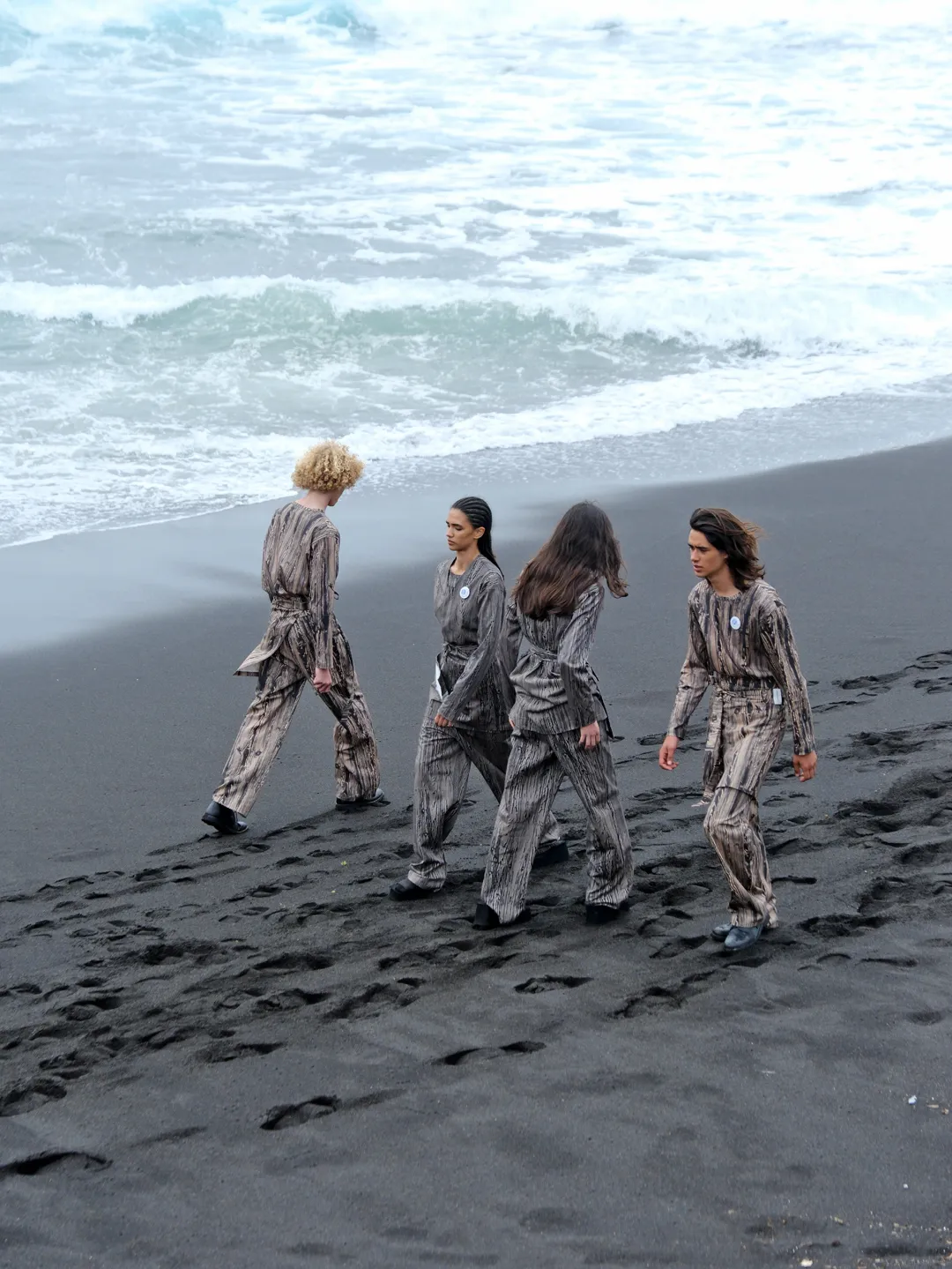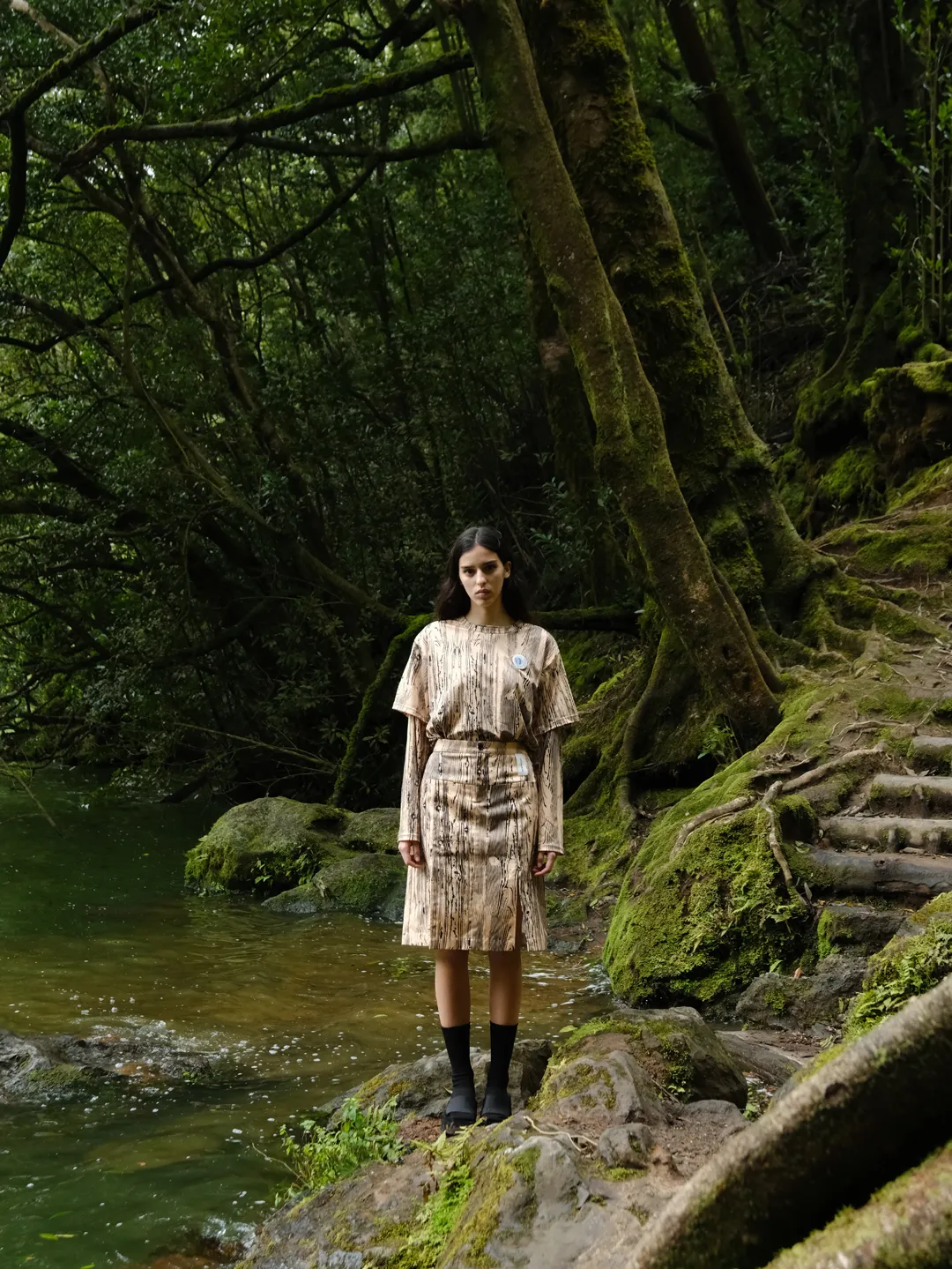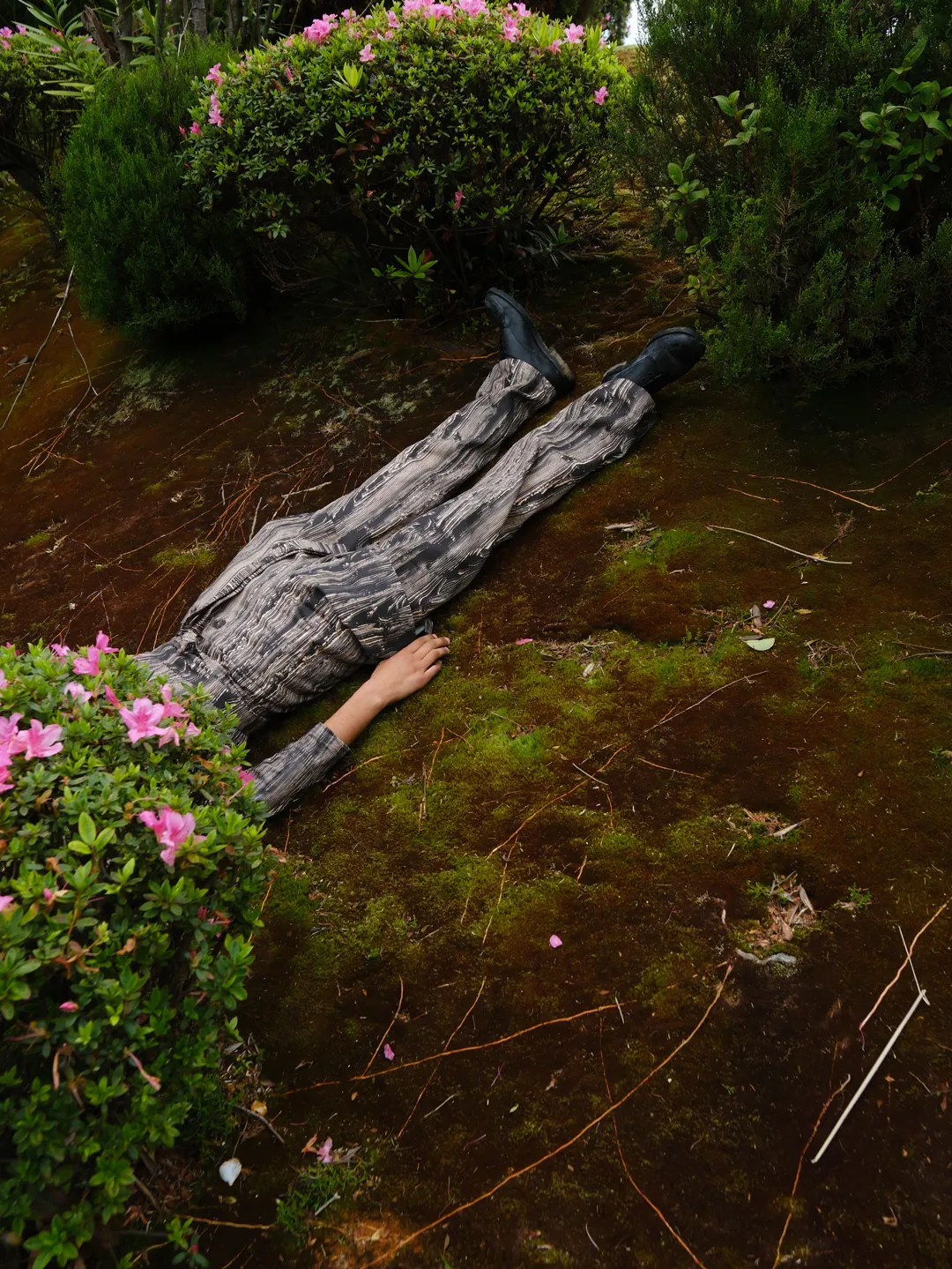時を越えた交流(リレーションシップ)
いまから約500年前、ポルトガルと日本は運命の出会いを遂げました。1543年のポルトガルの船乗りと日本文化との出会いは、食文化に始まり、物品や伝統なども含めて語彙に至るまで、外交、文化、商業の深い交流によって特徴づけられる関係の始まりでした。これらの合流点の要には、このつながりの生きた象徴としてそびえたつ樹、杉があります。日本の象徴のひとつであり、鎮守の森の主役でもあります。ポルトガルにおいては、アソーレス諸島にも杉の植林が行われ、今日では森林の主要な位置を占める樹木種となりました。島の景観の主だった要素であり、アソーレス諸島の経済における基本的な役割と、動植物界を支える生態学的価値、炭素固定などの生態系における重要な役割に貢献しています。
この樹とその順応性、赤杉、そして代々受け継がれてきた焼杉の製法によって得られる耐久性まで、その多様性から、2025年大阪・関西万博のポルトガルのユニフォームのビジュアルコンセプトが生まれ、セニットCENITとアニヴェックANIVECの責任の下で繊維・衣料品セクターであるモーダポルトガルMODAPORTUGALを促進する戦略に統合された取り組みとなりました。ミニマリストで普遍的なデザインのユニフォームは、地球にやさしい素材、画期的な縫製技術、木材の表面を燃やして保護し、耐久性を高める技術へのグラフィック参照を使用して、現代のポルトガルの本質を反映するようにデザインされました。「焼杉」とは文字通り「焦がした杉」を意味し、ニスや化学薬品を使わずに木材に暗くエレガントな質感を与えるプロセスです。
TIMELESS CONNECTIONS
Almost five centuries ago, Portugal and Japan crossed paths. The encounter between Portuguese sailors and Japanese people and culture in 1543 began a relationship marked by profound diplomatic, cultural and commercial exchanges — from gastronomy to vocabulary, passing through objects and traditions. In the midst of these confluences, a species of tree stands as a living symbol of this connection: the Cryptomeria japonica. Known as sugi in Japanese, it is the national tree of Japan. It is planted around Shinto temples and shrines, but it also found a home in the Azores, where it is now the main forest species: a true structural element of the islands’ landscape, playing a fundamental role in the Azorean economy and providing ecological value in supporting fauna and flora, contributing to carbon fixation, among other services to the ecosystem.
This tree and its versatility — from the reddish colour of the wood to the resistance reinforced by the ancestral yakisugi process — was the visual inspiration for the concept behind Portugal’s uniforms for Expo 2025 Osaka.
The initiative was part of the MODAPORTUGAL strategy to promote the Portuguese textile and clothing industry, which is the responsibility of CENIT and ANIVEC. The minimalist and timeless design of the uniforms reflects the essence of contemporary Portugal by using sustainable materials, innovative manufacturing techniques and graphic references to the art of yakisugi. The word yakisugi, literally meaning “burnt cedar” is the process of burning the surface of wood to protect it and make it more resistant, giving the wood a dark and elegant texture as well as eliminating the use of varnishes or chemicals.


